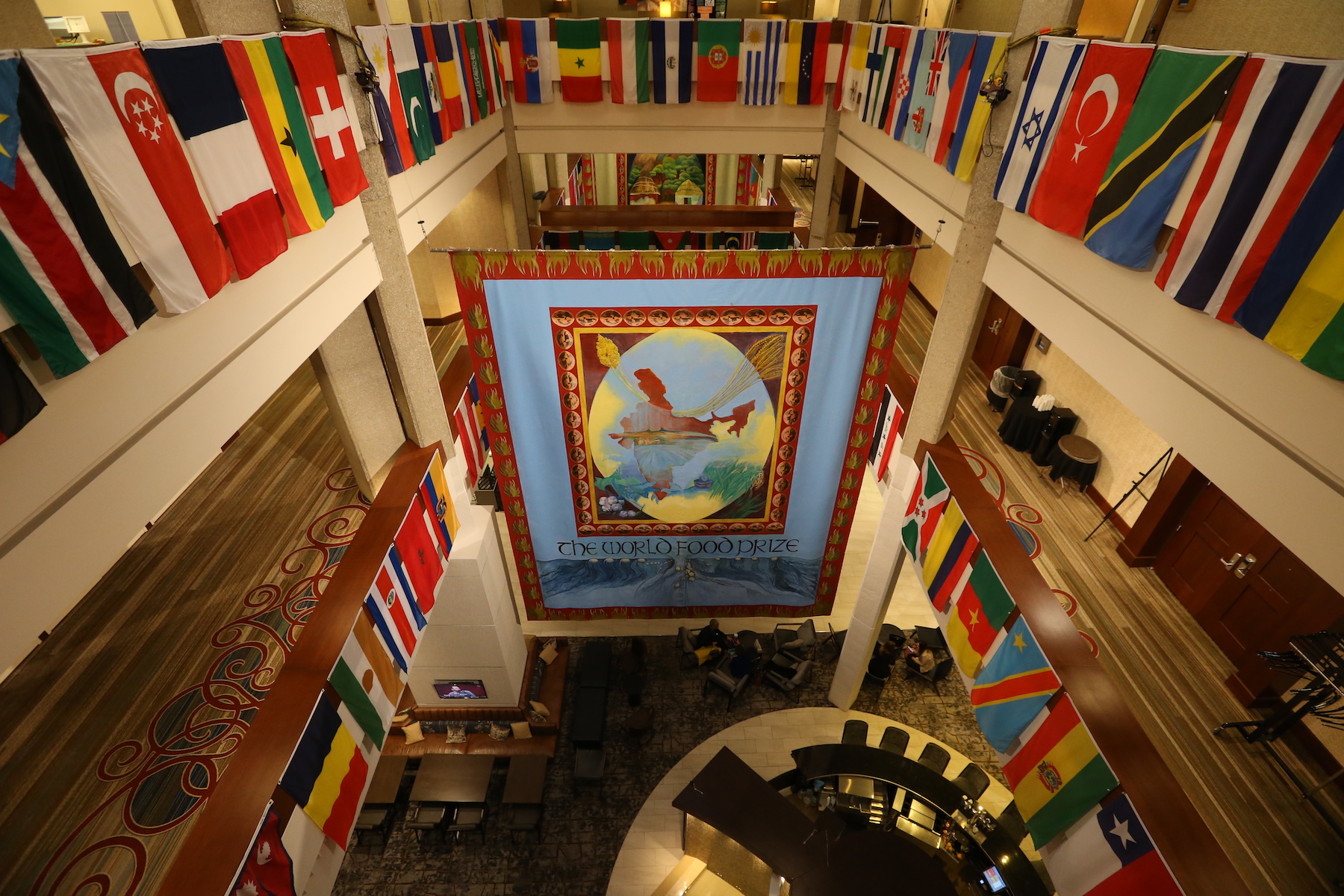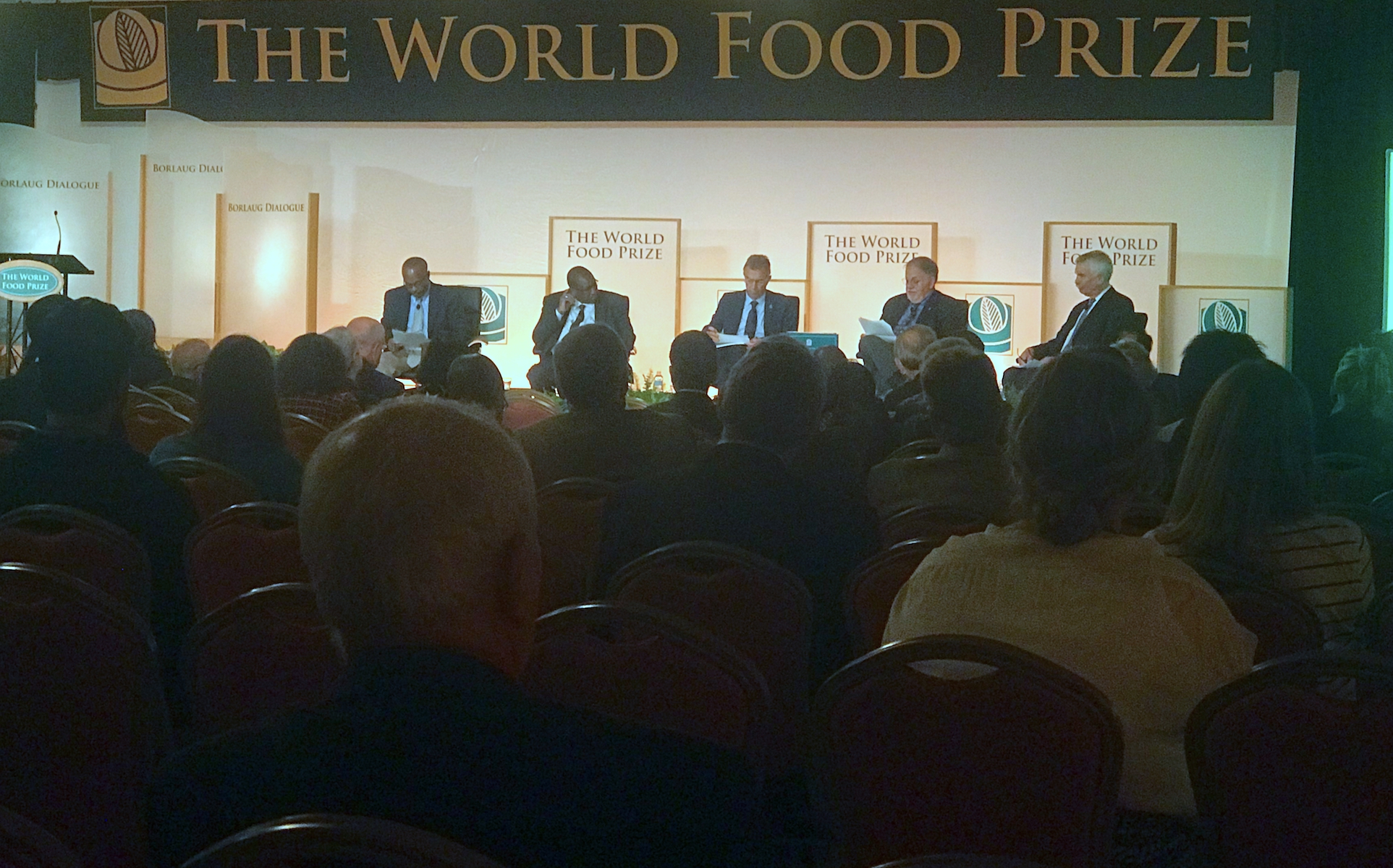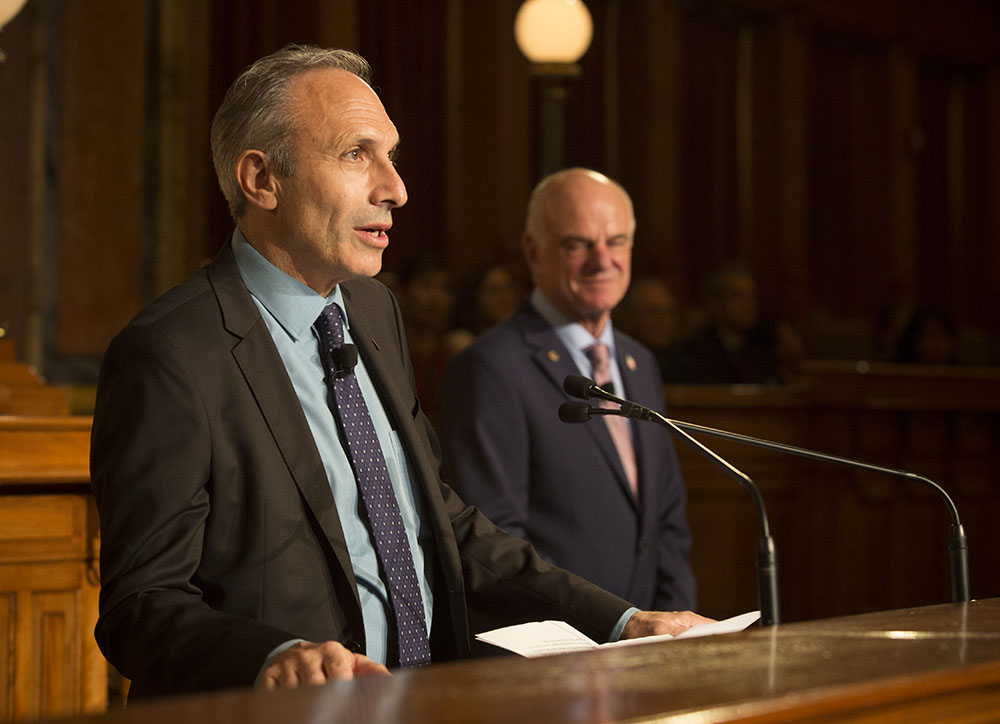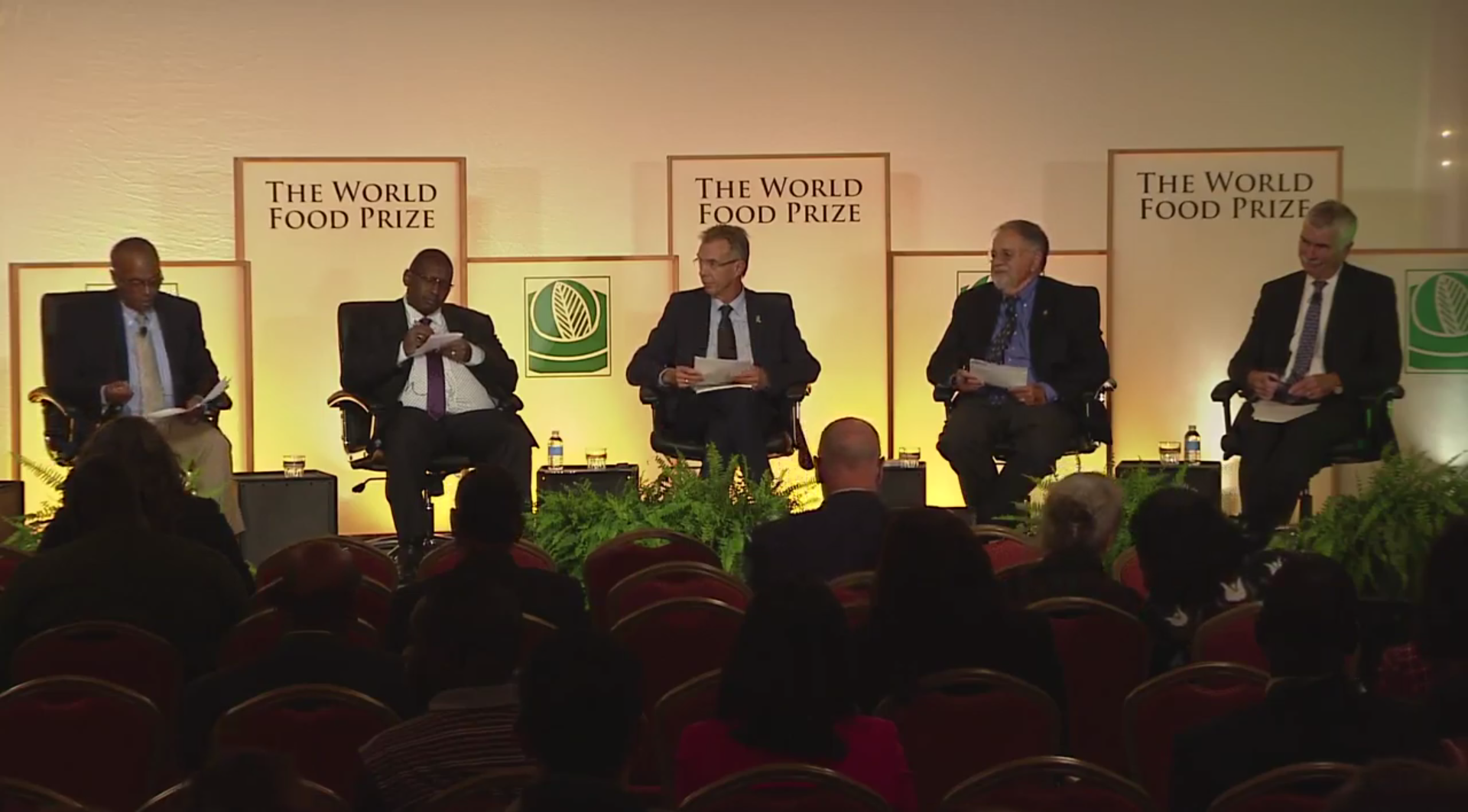DES MOINES (Iowa) — Hundreds of food and agriculture leaders from around the world gathered last week in Iowa, USA, for the 2018 edition of the Borlaug Dialogue. Much of the conversation this year was centered on how to “take it to the farmer,” as Norman Borlaug famously said. Experts discussed how to build sustainable seed systems, grounded on solid science, so improved varieties reach smallholder farmers.

Louise Sperling, senior technical advisor at Catholic Relief Services, presented a study on the sources of seed for smallholder farmers in Africa. She explained that 52.2 percent of households receive new varieties, but only 2.8 percent of the seed comes through agro-dealers. The biggest source is local markets and own stock, the so-called informal channels.
Quality and variety of seed should be the focus, emphasized Jean Claude Rubyogo, seed systems specialist at CIAT. In his view, we need to integrate formal and informal seed distribution channels, using the competitive advantages of each.
“When we take good seed, we address all African soil,” said Ruth Oniang’o, board chair at the Sasakawa Africa Foundation. Oniang’o explained access to financing is a major hurdle for smallholders to access better seed and other innovations. In her view, current financial products are inadequate. “Why should we get a farmer to pay 20 percent interest rates on a small loan?”
B.J. Marttin, member of the managing board of Rabobank Group, recommended financial institutions to partner with farmers through every stage, from production to sale, so they better understand risk and the whole value chain. Simon Winter, executive director of the Syngenta Foundation for Sustainable Agriculture, captured the main points from the session on financing for agricultural entrepreneurs. “We have to have the farmer at the center. The farmer is the ultimate customer,” Winter said. “If we are not serving farmer needs, we are not really solving the problems.”
Research to feed the world
The 2018 Global Agricultural Productivity (GAP) Report, presented at the Borlaug Dialogue, shows the growing gap between future food supply needs and agricultural production, particularly in low-income countries. To meet the projected food needs of nearly 10 billion people in 2050, global agricultural productivity must increase by 1.75 percent annually, the report states, but has only increased 1.51 percent annually since 2010.
A plenary session led by CGIAR explored the role of research in tackling this and other complex challenges. “We have to talk about food and agriculture research,” said former U.S. Secretary of Agriculture Dan Glickman. People need to understand research is not abstract academic knowledge, but rather useful innovation that goes “from the farm, to the table and to the stomach,” he explained.
“Innovation, no matter where you are in the world, is key to moving forward,” said Patience Koku, a farmer from Nigeria part of the Global Farmer Network. “I don’t think the farmers in Africa or in Nigeria need a lot of convincing” to adopt innovation, Koku noted. If someone is able to explain what a new technology can do, “farmers see that science can make their life better and embrace it.”
Rising to the challenge
Agricultural research is also crucial to confront global threats like pests, conflict and climate change.

Two separate sessions, hosted by Corteva Agriscience and CIMMYT, shared the latest approaches in the fight against fall armyworm and other pests and diseases. The Director General of the International Maize and Wheat Improvement Center (CIMMYT), Martin Kropff, explained how organizations are working together to respond to the rapid spread of fall armyworm in Africa and Asia. “We have to solve the problem based on science, and then develop, validate and deploy integrated pest management approaches,” Kropff said.
As part of the World Food Prize outreach program, Bram Govaerts, director of innovative business strategies at CIMMYT, gave a lecture to students at Brody Middle School about the importance of agriculture and food. “When people can’t grow crops or pay for food to feed their families, desperation turns to conflict.”
At a side event, the Economist Intelligence Unit presented the Global Food Security Index 2018, which ranks food systems in 113 countries based on affordability, availability, and quality and safety. Senior consultant Robert Powell explained that the index now includes an adjustment factor based on each country’s natural resource risks and resilience to the impacts of a changing climate. “All countries will experience the impact of climate change,” Powell said.
The pernicious effects of climate change were also evident to the 2018 World Food Prize winners, David Nabarro and Lawrence Haddad, who have led global efforts to curb child malnutrition. “There is no evidence to me that [this] crisis is going to stop, because climate change is here,” Nabarro declared. “The foods we choose to grow and eat have a large impact on emissions,” Haddad said. “Food has a lot to offer” on climate mitigation and “diversity is the secret sauce” for climate adaptation. “We need food systems that are diverse: in crops, locations, organizations involved in them…”
Less biodiversity translates into “less resilience and worse nutrition,” according to the Vice President of Peru, Mercedes Aráoz. Through improved health and nutrition services, the country more than halved malnutrition among children under five, from 28 percent in 2008 to 13.1 percent in 2016.

A rallying cry for nutrition
The impact of nutrition on the first 1,000 days of life lasts a lifetime, explained Haddad. “For young kids, these are permanent shocks.”
“If a person is not nourished in those very important weeks and months of life, the long-term consequences are likely to be irreversible,” Nabarro added. According to him, nutrition needs to be the target in the 2030 agenda, not only hunger.
“Nutrition-based interventions present us a new lens through which to create and assess impact as agricultural researchers,” said Elwyn Grainger-Jones, the executive director of the CGIAR System Organization. “Our future success must come not only from ensuring an adequate supply of calories for the global population, but also the right quality and diversity of foods to tackle hidden hunger as well.”
“We are not going to resolve the challenges of undernutrition without the ag sector stepping up in a big way and differently,” argued Shawn Baker, director of nutrition at the Bill & Melinda Gates Foundation. “Nutrition needs you,” Baker told other participants. “Welcome to the nutrition family.”


 Nutrition, health and food security
Nutrition, health and food security 


